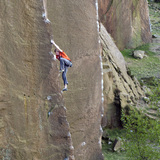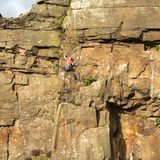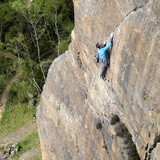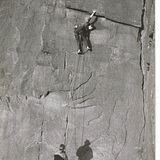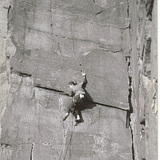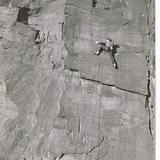Together with its near neighbour, Lawrencefield, Millstone Edge shows that when man meddles with nature the outcome isn’t always bad...at least not for those of us inclined to vertical tendencies. Every inch of this edge was once worked by quarrymen, leaving a succession of smooth featureless slabs and walls alternating with square-cut grooves and arêtes. The result, from a rock climber’s point of view, could hardly be better had it been purpose-built! And what the quarrymen unwittingly started, the aid climbers of the 1950s and 1960s unwittingly continued, hammering piton after piton into hairline cracks, eventually widening them sufficiently to allow the free climbers of later generations to insert fingers and toes.
Millstone now hosts some of the very best higher-grade routes to be found anywhere on grit. These generally fall into two categories: well-protected grooves and cracks, where the number of wires and cams you can place is only limited by your endurance, or poorly (sometimes VERY poorly) protected faces and arêtes. The most famous of these, 'Master's Edge', attracts climbers from all over the world and is frequently the scene of spectacular near-ground-falls.
Conditions and Aspect: The general orientation is west, but as much of the edge is formed into bays, some walls face south, others almost due north. The latter can provide welcome shade in summer, but naturally take longer to come into condition after poor weather. This is particularly true of the North Bay, which is often still damp long after the rest of the crag has dried out and rarely in good nick except in mid-summer.


